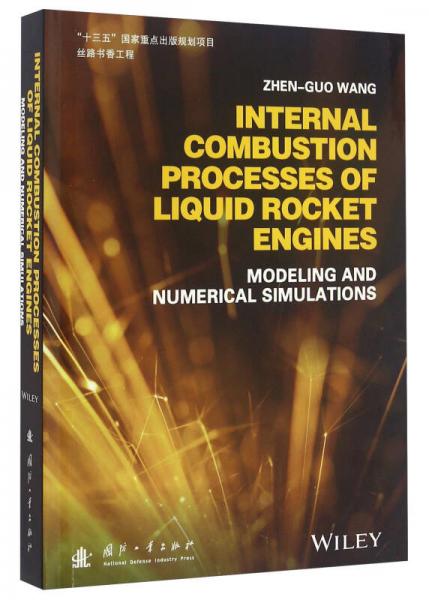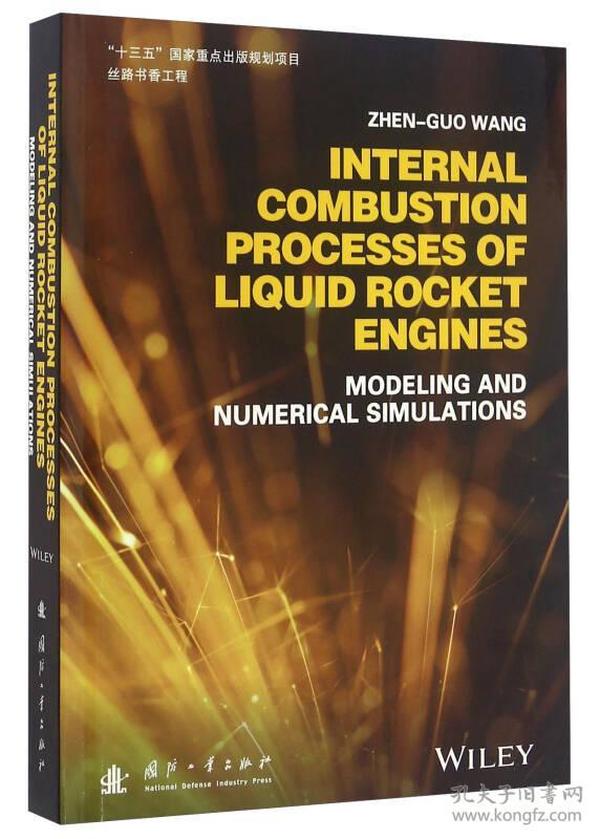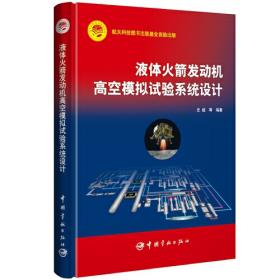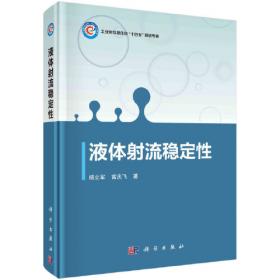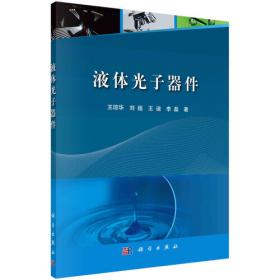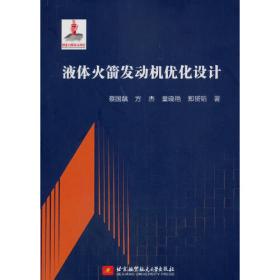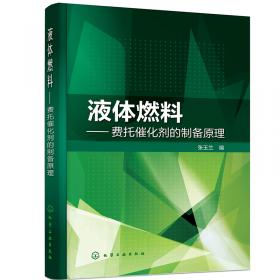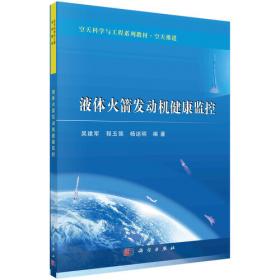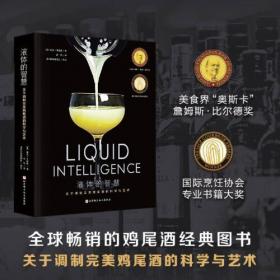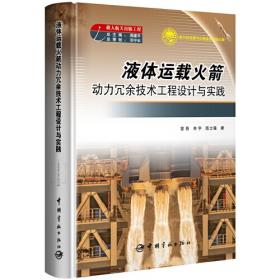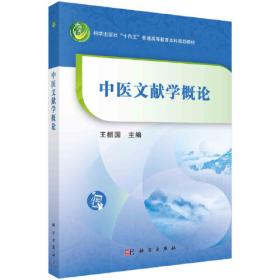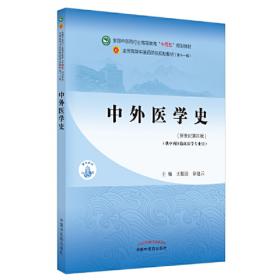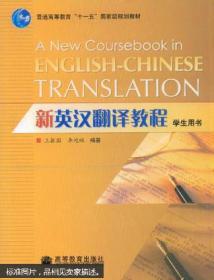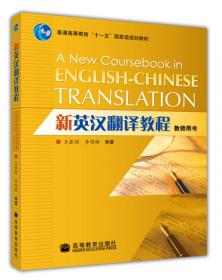液体火箭发动机燃烧过程建模与数值仿真(英文版)
出版时间:
2016-07
版次:
1
ISBN:
9787118110197
定价:
398.00
装帧:
精装
开本:
16开
纸张:
胶版纸
页数:
382页
正文语种:
英语
-
《液体火箭发动机燃烧过程建模与数值仿真(英文版)》是对作者王振国长期从事液体火箭发动机燃烧过程数值研究工作的总结,并反映了国内外当今研究发展的状况。全书共分为8章:第1章介绍了液体火箭发动机的基本结构与工作过程,概述液体火箭发动机燃烧过程数值仿真的特点及其发展历程;第2章~第7章为液体火箭发动机燃烧过程数学模型的理论研究,包括喷雾理论和喷嘴雾化模型、液滴蒸发燃烧模型、湍流流动模型、湍流燃烧模型、传热模型、燃烧不稳定模型;第8章为液体火箭发动机燃烧过程数值仿真应用研究,列出了完整的液体火箭发动机喷雾燃烧计算模型,介绍了方程及模型的数值求解方法以及网格生成方法,具体应用实例包括液体火箭发动机推力室燃烧、流动、传热以及燃烧不稳定数值分析。 Preface
1 Introduction
1.1 Basic Configuration of Liquid Rocket Engines
1.1.1 Propellant Feed System
1.1.2 Thrust Chamber
1.2 Internal Combustion Processes of Liquid Rocket Engines
1.2.1 Start and Shutdown
1.2.2 Combustion Process
1.2.3 Performance Parameters in Working Process
1.3 Characteristics and Development History of Numerical Simulation of the
Combustion Process in Liquid Rocket Engines
1.3.1 Benefits of Numerical Simulation of the Combustion Process in
Liquid Rocket Engines
1.3.2 Main Contents of Numerical Simulations of Liquid Rocket Engine
Operating Process
1.3.3 Development of Numerical Simulations of Combustion Process
in Liquid Rocket Engines
1.4 Governing Equations of Chemical Fluid Dynamics
1.5 Outline of this Book
References
2 Physical Mechanism and Numerical Modeling of Liquid Propellant Atomization
2.1 Types and Functions of Injectors in a Liquid Rocket Engine
2.2 Atomization Mechanism of Liquid Propellant
2.2.1 Formation of Static Liquid Droplet
2.2.2 Breakup of Cylindrical Liquid Jet
2.2.3 Liquid Sheet Breakup
2.2.4 Droplet Secondary Breakup
2.3 Characteristics of Atomization in Liquid Rocket Engines
2.3.1 Distribution Function of the Droplet Size
2.3.2 Mean Diameter and Characteristic Diameter
2.3.3 Measurement of Spray Size Distribution
2.4 Atomization Modeling for Liquid Rocket Engine Atomizers
2.4.1 Straight-flow Injector
2.4.2 Centrifugal Injector
2.4.3 Impinging-stream Injectors
2.4.4 Coaxial Shear Injector
2.4.5 Coaxial Centrifugal Injectors
2.5 Numerical Simulation of Liquid Propellant Atomization
2.5.1 Theoretical Models of Liquid Propellant Atomization
2.5.2 Quasi-fluid Models
2.5.3 Particle Trajectory Models
2.5.4 Simulation of Liquid Jet Atomization Using Interface Tracking Method
2.5.5 Liquid Jet Structure - Varying Flow Conditions
References
3 Modeling of Droplet Evaporation and Combustion
3.1 Theory for Quasi-Steady Evaporation and Combustion of a Single Droplet at
Atmospheric Pressure
3.1.1 Quasi-Steady Evaporation Theory for Single Droplet in the Static
Gas without Combustion
3.1.2 Quasi-Steady Evaporation Theory for Droplet in a Static Gas with
Combustion
3.1.3 Non-Combustion Evaporation Theory for a Droplet in a
Convective Flow
3.1.4 Evaporation Theory for a Droplet in a Convective Medium with
Combustion
3.2 Evaporation Model for a Single Droplet under High Pressure
3.2.1 ZKS Droplet High Pressure Evaporation Theory
3.2.2 Application of the Liquid Activity Coefficient to Calculate the
Gas-Liquid Equilibrium at a High Pressure
3.3 Subcritical Evaporation Response Characteristics of Propellant Droplet in
Oscillatory Environments
3.3.1 Physical Model
3.3.2 Examples and the Analysis of Results
3.4 Multicomponent Fuel Droplet Evaporation Model
3.4.1 Simple Multicomponent Droplet Evaporation Model
3.4.2 Continuous Thermodynamics Model of Complex Multicomponent
Mixture Droplet Evaporation
3.5 Droplet Group Evaporation
3.5.1 Definition of Group Combustion Number
3.5.2 Droplet Group Combustion Model
References
4 Modeling of Turbulence
4.1 Turbulence Modeling in RANS
4.1.1 Algebraic Model
4.1.2 One-Equation Model
4.1.3 Two-Equation Models
4.1.4 Turbulence Model Modification
4.1.5 Nonlinear Eddy Viscosity Model
4.1.6 Reynolds-Stress Model
4.1.7 Comments on the Models
4.2 Theories and Equations of Large Eddy Simulation
4.2.1 Philosophy behind LES
4.2.2 LES Governing Equations
4.2.3 Subgrid-Scale Model
4.2.4 Hybrid RANS/LES Methods
4.3 Two-Phase Turbulence Model
4.3.1 Hinze-Tchen Algebraic Model for Particle Turbulence
4.3.2 Two-Phase Turbulence Model k-e-kp and k-e-Ap
References
5 Turbulent Combustion Model
5.1 Average of Chemical Reaction Term
5.2 Presumed PDF——Fast Chemistry Model for Diffusion Flame
5.2.1 Concepts and Assumptions
5.2.2 x-e-Z-g Equations
5.2.3 Probability Density Distribution Function
5.2.4 Presumed PDF
5.2.5 Truncated Gaussian PDF
5.3 Finite Rate EBU——Arrhenius Model for Premixed Flames
5.4 Moment-Equation Model
5.4.1 Time-Averaged Chemical Reaction Rate
5.4.2 Closure for the Moments
5.5 Flamelet Model for Turbulent Combustion
5.5.1 Diffusion Flamelet Model
5.5.2 Premixed Flamelet Model
5.6 Transported PDF Method for Turbulent Combustion
5.6.1 Transport Equations of the Probability Density Function
5.6.2 The Closure Problem of Turbulence PDF Equation
5.6.3 Transport Equation for the Single-Point Joint PDF with
Density-Weighted Average
5.6.4 Solution Algorithm for the Transport Equation of Probability
Density Function
5.7 Large Eddy Simulation of Turbulent Combustion
5.7.1 Governing Equations of Large Eddy Simulation for
Turbulent Combustion
5.7.2 Sub-Grid Scale Combustion Models
References
6 Heat Transfer Modeling and Simulation
6.1 Convective Heat Transfer Model of Combustor Wall
6.1.1 Model of Gas Convection Heat
6.1.2 Convection Cooling Model
6.2 Heat Conduction Model of Combustor Wall
6.2.1 Fourier Heat Conduction Law
6.2.2 1D Steady Heat Conduction
6.2.3 2D Steady Heat Conduction
6.2.4 Unsteady Heat Conduction
6.3 Radiation Heat Transfer Model
6.3.1 Basic Law of Radiation
6.3.2 Empirical Model of Radiation Heat Flux Density Calculation
6.3.3 Numerical Simulation of Combustion Heat Radiation
References
7 The Model of Combustion Instability
7.1 Overview
7.1.1 Behavior of Combustion Instability
7.1.2 Classification of Combustion Instability
7.1.3 Characteristics of Combustion Instability
7.2 Acoustic Basis of Combustion Instability
7.2.1 Rayleigh Criterion for Acoustic Oscillations Arising from
Heat or Mass Supply
7.2.2 Acoustic and Acoustic Oscillations
7.2.3 Acoustic Modes in the Combustion Chamber
7.2.4 Self-Excited Oscillations in Rocket Engines
7.3 Response Characteristics of Combustion Process in Liquid Rocket Engines
7.3.1 Response Characteristics of the Propellant Supply System
7.3.2 Response Characteristics of Spray Atomization Process
7.3.3 Response Characteristics of Droplet Evaporation Process
7.4 Sensitive Time Delay Model n-z
7.4.1 Combustion Time Delay
7.4.2 Sensitive Time Delay Model
7.5 Nonlinear Theory for Combustion Stability in Liquid Rocket Engines
7.5.1 Nonlinear Field Oscillator Model
7.5.2 Continuous Stirred Tank Reactor Acoustic Model
7.5.3 Spatio-Temporal Interaction Dynamic Model
7.5.4 General Thermodynamic Analysis of Combustion Instability
7.6 Control of Unstable Combustion
7.6.1 Passive Control
7.6.2 Active Control
7.6.3 A Third Control Method
References
8 Numerical Method and Simulations of Liquid Rocket Engine
Combustion Process
8.1 Governing Equations of Two-Phase Multicomponent Reaction Flows
8.1.1 Gas Phase Governing Equation
8.1.2 Liquid Particle Trajectory Model
8.1.3 Turbulence Model
8.1.4 Droplets Atomizing Model
8.1.5 Droplet Evaporation Model
8.1.6 Chemical Reaction Kinetics Model
8.2 Numerical Methodology
8.2.1 Overview
8.2.2 The Commonly-Used Discretization Scheme
8.2.3 Discrete Equations
8.2.4 Discretization of the Momentum Equation Based on the
Staggered Grid
8.2.5 The SIMPLE Algorithm of Flow Field Computing
8.2.6 PISO Algorithm
8.3 Grid Generation Techniques
8.3.1 Structured Grid Generation Technology
8.3.2 Unstructured Mesh Generation Techniques
8.4 Simulations of Combustion in Liquid Rocket Engines and Results Analysis
8.4.1 Numerical Analysis of Dual-States Hydrogen Engine Combustion
and Heat Transfer Processes
8.4.2 Numerical Heat Transfer Simulation of a Three-Component
Thrust Chamber
8.4.3 Numerical Simulation of Liquid Rocket Engine Combustion
Stability
References
Index
-
内容简介:
《液体火箭发动机燃烧过程建模与数值仿真(英文版)》是对作者王振国长期从事液体火箭发动机燃烧过程数值研究工作的总结,并反映了国内外当今研究发展的状况。全书共分为8章:第1章介绍了液体火箭发动机的基本结构与工作过程,概述液体火箭发动机燃烧过程数值仿真的特点及其发展历程;第2章~第7章为液体火箭发动机燃烧过程数学模型的理论研究,包括喷雾理论和喷嘴雾化模型、液滴蒸发燃烧模型、湍流流动模型、湍流燃烧模型、传热模型、燃烧不稳定模型;第8章为液体火箭发动机燃烧过程数值仿真应用研究,列出了完整的液体火箭发动机喷雾燃烧计算模型,介绍了方程及模型的数值求解方法以及网格生成方法,具体应用实例包括液体火箭发动机推力室燃烧、流动、传热以及燃烧不稳定数值分析。
-
目录:
Preface
1 Introduction
1.1 Basic Configuration of Liquid Rocket Engines
1.1.1 Propellant Feed System
1.1.2 Thrust Chamber
1.2 Internal Combustion Processes of Liquid Rocket Engines
1.2.1 Start and Shutdown
1.2.2 Combustion Process
1.2.3 Performance Parameters in Working Process
1.3 Characteristics and Development History of Numerical Simulation of the
Combustion Process in Liquid Rocket Engines
1.3.1 Benefits of Numerical Simulation of the Combustion Process in
Liquid Rocket Engines
1.3.2 Main Contents of Numerical Simulations of Liquid Rocket Engine
Operating Process
1.3.3 Development of Numerical Simulations of Combustion Process
in Liquid Rocket Engines
1.4 Governing Equations of Chemical Fluid Dynamics
1.5 Outline of this Book
References
2 Physical Mechanism and Numerical Modeling of Liquid Propellant Atomization
2.1 Types and Functions of Injectors in a Liquid Rocket Engine
2.2 Atomization Mechanism of Liquid Propellant
2.2.1 Formation of Static Liquid Droplet
2.2.2 Breakup of Cylindrical Liquid Jet
2.2.3 Liquid Sheet Breakup
2.2.4 Droplet Secondary Breakup
2.3 Characteristics of Atomization in Liquid Rocket Engines
2.3.1 Distribution Function of the Droplet Size
2.3.2 Mean Diameter and Characteristic Diameter
2.3.3 Measurement of Spray Size Distribution
2.4 Atomization Modeling for Liquid Rocket Engine Atomizers
2.4.1 Straight-flow Injector
2.4.2 Centrifugal Injector
2.4.3 Impinging-stream Injectors
2.4.4 Coaxial Shear Injector
2.4.5 Coaxial Centrifugal Injectors
2.5 Numerical Simulation of Liquid Propellant Atomization
2.5.1 Theoretical Models of Liquid Propellant Atomization
2.5.2 Quasi-fluid Models
2.5.3 Particle Trajectory Models
2.5.4 Simulation of Liquid Jet Atomization Using Interface Tracking Method
2.5.5 Liquid Jet Structure - Varying Flow Conditions
References
3 Modeling of Droplet Evaporation and Combustion
3.1 Theory for Quasi-Steady Evaporation and Combustion of a Single Droplet at
Atmospheric Pressure
3.1.1 Quasi-Steady Evaporation Theory for Single Droplet in the Static
Gas without Combustion
3.1.2 Quasi-Steady Evaporation Theory for Droplet in a Static Gas with
Combustion
3.1.3 Non-Combustion Evaporation Theory for a Droplet in a
Convective Flow
3.1.4 Evaporation Theory for a Droplet in a Convective Medium with
Combustion
3.2 Evaporation Model for a Single Droplet under High Pressure
3.2.1 ZKS Droplet High Pressure Evaporation Theory
3.2.2 Application of the Liquid Activity Coefficient to Calculate the
Gas-Liquid Equilibrium at a High Pressure
3.3 Subcritical Evaporation Response Characteristics of Propellant Droplet in
Oscillatory Environments
3.3.1 Physical Model
3.3.2 Examples and the Analysis of Results
3.4 Multicomponent Fuel Droplet Evaporation Model
3.4.1 Simple Multicomponent Droplet Evaporation Model
3.4.2 Continuous Thermodynamics Model of Complex Multicomponent
Mixture Droplet Evaporation
3.5 Droplet Group Evaporation
3.5.1 Definition of Group Combustion Number
3.5.2 Droplet Group Combustion Model
References
4 Modeling of Turbulence
4.1 Turbulence Modeling in RANS
4.1.1 Algebraic Model
4.1.2 One-Equation Model
4.1.3 Two-Equation Models
4.1.4 Turbulence Model Modification
4.1.5 Nonlinear Eddy Viscosity Model
4.1.6 Reynolds-Stress Model
4.1.7 Comments on the Models
4.2 Theories and Equations of Large Eddy Simulation
4.2.1 Philosophy behind LES
4.2.2 LES Governing Equations
4.2.3 Subgrid-Scale Model
4.2.4 Hybrid RANS/LES Methods
4.3 Two-Phase Turbulence Model
4.3.1 Hinze-Tchen Algebraic Model for Particle Turbulence
4.3.2 Two-Phase Turbulence Model k-e-kp and k-e-Ap
References
5 Turbulent Combustion Model
5.1 Average of Chemical Reaction Term
5.2 Presumed PDF——Fast Chemistry Model for Diffusion Flame
5.2.1 Concepts and Assumptions
5.2.2 x-e-Z-g Equations
5.2.3 Probability Density Distribution Function
5.2.4 Presumed PDF
5.2.5 Truncated Gaussian PDF
5.3 Finite Rate EBU——Arrhenius Model for Premixed Flames
5.4 Moment-Equation Model
5.4.1 Time-Averaged Chemical Reaction Rate
5.4.2 Closure for the Moments
5.5 Flamelet Model for Turbulent Combustion
5.5.1 Diffusion Flamelet Model
5.5.2 Premixed Flamelet Model
5.6 Transported PDF Method for Turbulent Combustion
5.6.1 Transport Equations of the Probability Density Function
5.6.2 The Closure Problem of Turbulence PDF Equation
5.6.3 Transport Equation for the Single-Point Joint PDF with
Density-Weighted Average
5.6.4 Solution Algorithm for the Transport Equation of Probability
Density Function
5.7 Large Eddy Simulation of Turbulent Combustion
5.7.1 Governing Equations of Large Eddy Simulation for
Turbulent Combustion
5.7.2 Sub-Grid Scale Combustion Models
References
6 Heat Transfer Modeling and Simulation
6.1 Convective Heat Transfer Model of Combustor Wall
6.1.1 Model of Gas Convection Heat
6.1.2 Convection Cooling Model
6.2 Heat Conduction Model of Combustor Wall
6.2.1 Fourier Heat Conduction Law
6.2.2 1D Steady Heat Conduction
6.2.3 2D Steady Heat Conduction
6.2.4 Unsteady Heat Conduction
6.3 Radiation Heat Transfer Model
6.3.1 Basic Law of Radiation
6.3.2 Empirical Model of Radiation Heat Flux Density Calculation
6.3.3 Numerical Simulation of Combustion Heat Radiation
References
7 The Model of Combustion Instability
7.1 Overview
7.1.1 Behavior of Combustion Instability
7.1.2 Classification of Combustion Instability
7.1.3 Characteristics of Combustion Instability
7.2 Acoustic Basis of Combustion Instability
7.2.1 Rayleigh Criterion for Acoustic Oscillations Arising from
Heat or Mass Supply
7.2.2 Acoustic and Acoustic Oscillations
7.2.3 Acoustic Modes in the Combustion Chamber
7.2.4 Self-Excited Oscillations in Rocket Engines
7.3 Response Characteristics of Combustion Process in Liquid Rocket Engines
7.3.1 Response Characteristics of the Propellant Supply System
7.3.2 Response Characteristics of Spray Atomization Process
7.3.3 Response Characteristics of Droplet Evaporation Process
7.4 Sensitive Time Delay Model n-z
7.4.1 Combustion Time Delay
7.4.2 Sensitive Time Delay Model
7.5 Nonlinear Theory for Combustion Stability in Liquid Rocket Engines
7.5.1 Nonlinear Field Oscillator Model
7.5.2 Continuous Stirred Tank Reactor Acoustic Model
7.5.3 Spatio-Temporal Interaction Dynamic Model
7.5.4 General Thermodynamic Analysis of Combustion Instability
7.6 Control of Unstable Combustion
7.6.1 Passive Control
7.6.2 Active Control
7.6.3 A Third Control Method
References
8 Numerical Method and Simulations of Liquid Rocket Engine
Combustion Process
8.1 Governing Equations of Two-Phase Multicomponent Reaction Flows
8.1.1 Gas Phase Governing Equation
8.1.2 Liquid Particle Trajectory Model
8.1.3 Turbulence Model
8.1.4 Droplets Atomizing Model
8.1.5 Droplet Evaporation Model
8.1.6 Chemical Reaction Kinetics Model
8.2 Numerical Methodology
8.2.1 Overview
8.2.2 The Commonly-Used Discretization Scheme
8.2.3 Discrete Equations
8.2.4 Discretization of the Momentum Equation Based on the
Staggered Grid
8.2.5 The SIMPLE Algorithm of Flow Field Computing
8.2.6 PISO Algorithm
8.3 Grid Generation Techniques
8.3.1 Structured Grid Generation Technology
8.3.2 Unstructured Mesh Generation Techniques
8.4 Simulations of Combustion in Liquid Rocket Engines and Results Analysis
8.4.1 Numerical Analysis of Dual-States Hydrogen Engine Combustion
and Heat Transfer Processes
8.4.2 Numerical Heat Transfer Simulation of a Three-Component
Thrust Chamber
8.4.3 Numerical Simulation of Liquid Rocket Engine Combustion
Stability
References
Index
查看详情
-
九品
北京市丰台区
平均发货24小时
成功完成率92.2%
-
全新
辽宁省大连市
平均发货7小时
成功完成率96.48%

 占位居中
占位居中

